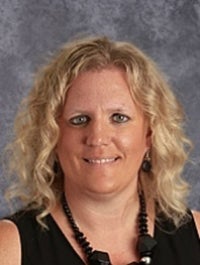School board looks at how MCA participation rates affect scores
Published 5:08 pm Wednesday, September 6, 2023
|
Getting your Trinity Audio player ready...
|
The Albert Lea school district saw increased participation in statewide assessments this year compared to last year. And while that was good news, test scores were mixed.
Within Minnesota Comprehensive Assessment achievement rates, 35% of students within the district met the reading achievement rate. By comparison, the statewide rate for reading was 47.6%. In 2023, 8.8% of students exceeded expectations for reading, while 31.4% met expectations, 23% partially met expectations and 36.8% did not meet expectations.
“This is more good information to think about when you think about our opportunities for growth, those percent of students that are in that partially meets category, how do we help move the needle for them into meets?”said Tonya Franks, executive director of academics and accountability, to the school board on Monday.
Within the district, 87.2% of students in the district participated in MCA reading tests. By comparison, over 90% of students statewide participated. That number was up from the 84.6% of students within the district who participated in the MCA reading assessment in 2022, and this year’s percentage was a full 13% higher than the 74.2% participation rate in 2021.
In math, 29.9% of students in the district met or exceeded achievement rates. That number is almost 13% below the state rate of 42.8% of students meeting or exceeding expectations. Roughly 10% of students saw an improvement in achievement level, while over 50% of students saw a decrease in achievement levels.
In 2023, 8.8% of students exceeded math expectations, 26.7% met them, 25% partially met them and 39.5% did not meet the standards. By comparison, 10.3% of students exceeded math MCA results last year, 26.8% met standards, 22.7% partially met them and 40.1% of students did not meet the standards.
Eighty-four percent of students in the district participated in the math test in 2023, which was a 2.1% increase from last year’s 81.9%.
In science, 3.4% of students exceeded state standards, 28% met them, 32.9% partially met them and 35.7% did not meet them. Last year, 3.5% of students exceeded standards, 31.9% met them, 21.1% partially met them and 43.5% did not meet standards.
Franks also took time to explain how students opting out of testing affected data.
“It’s important to know that opt outs are counted as ‘does not meet’ in the Minnesota Report Card,” she said.
She then used the high school as an example.
There 76.7% of students participated in the reading standard. Reading was tested first, math later and science last. The percentage of students who participated fell from 76.7% (reading) to 69% (math) to 59.9% (science).
The district expected 493 students to participate in reading, while in actuality 378 participated, which meant 115 students were counted as “does not meet.” In science, the high school expected 449 students to participate, while in reality 310 participated, meaning 139 were counted as not meeting proficiency. And in science, the district expected 455 students to participate, while in reality 268 participated, meaning 187 students were counted as not meeting standards.
In terms of formative assessments, benchmark assessments were given in the fall, winter and spring.
Within the district, 46% of students in kindergarten and first grade were classified as being at low risk. By comparison, 36% were determined to be at low risk last year, and 27% in the spring of 2021. In kindergarten, 49% of students fell into the low risk category, an improvement of 7% from last year’s 42%, and an 18% increase from the spring of 2021.
In first grade, 42% of students fell into the low risk category, a 13% increase from the spring of 2022, when 29% of students were determined to be low risk.
In eReading, an assessment for second- through seventh-graders, 41% of participating students were determined to be at low or no risk. That number is down from the past two years, when 44% of students within those grades fell into the low or no risk pool.
In aReading, an assessment for second-, third-, fourth- and fifth-graders, 41% of those participating were determined to be at low risk.
In eMath, 61% of students fell at low risk. By comparison, 37% of students were labeled low risk in the spring of 2021. Approximately 64% of kindergarten students were determined to be at low risk, while 58% of first-graders were at low risk.
In aMath, 51% of students who took the benchmark in the spring of 2023 fell into the low risk category.
Besides providing results, she wanted to touch on what the district could do moving forward to help students.
“As we look forward to out opportunities for growth and development, those structures that we put in place, what we believe as an organization of how things work, … we’re going to have student-focused, student-centered education,” Franks said. “All of those pieces put together, how do they move forward to impact our outcome at the end?”
Speaking of opportunities for growth, she wanted to know what whole group instruction looked like, structured literacy and foundational skills with evidenced-based best practices.
She also touched on a co-teaching model for English language learners.
“Oftentimes we ask our English language learners to participate [in] English language instruction with their classroom, and then participate in another instructional block with their English language learners peers,” she said. “While not intentionally fragmenting, this instruction that may have happened here may have been a different set of skills, a different set of vocabulary and a different set of knowledge required.
“In essence we’ve created a fragmented experience for our students.”
In math, Franks said there was an opportunity for growth through curriculum review and instructional fidelity.
“Really researching best practices in math instruction and really focusing on conceptual thinking and understanding, not rote memorization, not memorizing an algorithm and being able to spit that out,” she said.
The district also has a new data warehouse, EduClimber.
According to Franks, it will store all data, whether an MCA, FastBridge assessment or regular progress monitoring.
“I can look at any student in there and be able to drill down to what their needs are and then work with our collaborative teams to make decisions about how best to meet the needs of our students,” she said.
Franks also touched on the demographics of the district.
Just over 11% of students are English language learners, 18.4% are listed as receiving special education services, and 1.1% are homeless. Over 62% of students qualify for free/reduced-price meals.
Franks defined homeless students as those within a family that did not have a homestead of their own.
Within the district, 57.5% of all students are white, with the next largest demographic being hispanic or latino at 23.9%, Asians made up 10.8% of the district body, while 3.3% identified as two or more races, 3.2% are black or African American, and 1.2% of students identified as American Indian.
According to Franks, the district didn’t have enough students of Native Hawaiian or Pacific Island or Other Indigenous Peoples to report.







